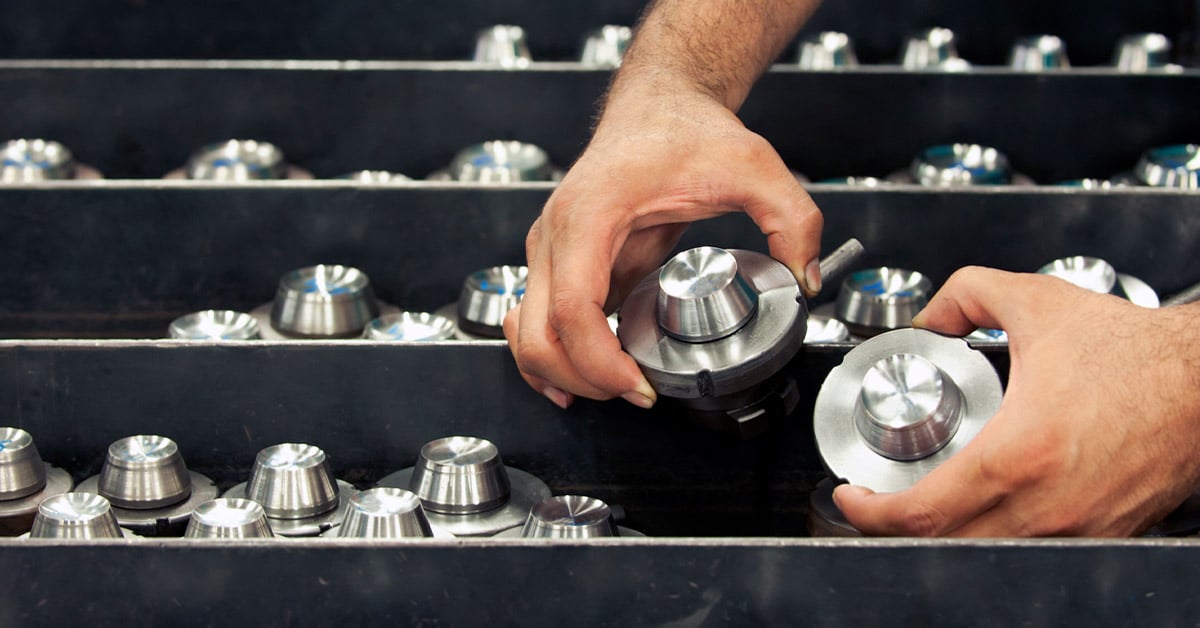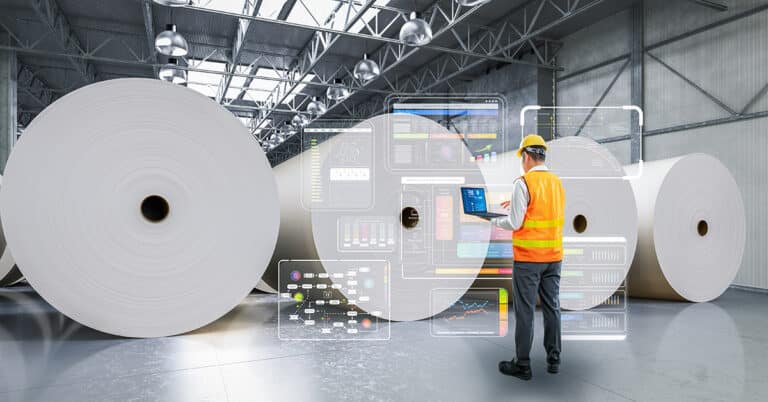Customers won’t tolerate product that’s defective or fails to meet their expectations. Shipping anything like that will result in returns, warranty costs and, most likely, lost future business.
The purpose of quality control in manufacturing is to prevent this from happening. Today’s approach to quality control involves more than just protecting the customer. It’s about gathering data and finding ways to make improvements, while at the same time, driving down costs.
This blog explores quality control practices in manufacturing. It covers what’s involved in quality control, how to set about making improvements, how it relates to maintenance, and how it compares to quality assurance.
What is quality control in manufacturing?
Quality control (QC) is the set of actions taken to protect the customer from receiving substandard product. It’s primarily a reactive approach that involves finding and separating bad parts, items or material from good.
The primary quality control methods in manufacturing are inspection and testing, supported by calibration to help ensure test and measurement equipment yields accurate results. There are various ways of doing inspections and tests, and while they benefit the customer, they also incur costs.
Quality control vs. quality assurance
These terms cover different but overlapping approaches to protecting the customer. With quality assurance (QA), the focus is on preventing quality problems rather than finding them. This is done by defining systems that ensure tasks affecting quality are carried out in a consistent, standardized way. The QA system, often referred to as the quality management system or QMS, covers aspects of production including:
- Verifying product design conforms to customer requirements
- Accepting and acknowledging customer orders
- Procuring materials that meet the required standards
- Documenting standardized work methods
- Defining inspection and test processes
- Auditing performance of the QMS and finding ways to improve it
Importantly, QA isn’t better than QC, nor does it make QC unnecessary. Rather, it leverages quality control practices in manufacturing for the benefit of the organization.
The quality control process in manufacturing
Quality control begins by defining dimensional, visual or functional standards. Control points are then established where the inspections or tests will be performed. Deciding where to do these is a function of how to reduce waste by detecting defects or problems early in the manufacturing process, plus practicality — where can quality control checks be performed?
It’s preferred that quality control checks are performed by someone independent of production, as this avoids potential conflicts of interest. However, many businesses also use some degree of operator inspection where machine operators are responsible for the quality of the product coming off their machine.
When defects are found, a decision is needed as to whether the product can be reworked or must be scrapped.
Data capture and analysis is another big part of the quality control process. Records of defects or flaws are used to prioritize improvement actions to drive down waste. (In this regard, QC takes on aspects of QA.)
Quality control methods in manufacturing
Manufacturers must develop and implement quality control methods in production that suit the nature of the business. This means the methods used in continuous processes differ from those in discrete parts or batch production.
The main methods are:
1. Inspection: This can be 100% inspection, where every part is checked, or done on a sampling basis. In many plants, it’s standard practice to inspect the first parts from a machine after a changeover or setup and then sample or not inspect until the next operation. Automated inspection is being implemented in many places, often to check a specific feature but also sometimes as a final inspection before shipping.
2. Statistical Quality Control: This is used to avoid the expense of 100% inspection. It consists of statistical acceptance sampling and statistical process control (SPC). The former is often used with batches of incoming material as it provides a scientific basis for deciding if the delivery should be accepted or rejected. SPC is used to manage variability within manufacturing processes by monitoring for statistically significant shifts from the mean.
3. Total Quality Management (TQM): Combining QA and QC, this unites the organization with the goal of improving quality in pursuit of customer satisfaction. Everyone is expected to contribute toward quality improvement with measurement being a core element of the effort.
4. Lean Manufacturing: Defects are a form of waste that lean attempts to eliminate. Lean is focused on continuous improvement efforts, which needs data from quality control checks but also takes a preventive approach. Lean manufacturing technology includes poka-yoke devices that make errors impossible, and single-minute-exchange-of-die (SMED) devices for faster, more consistent machine changeovers.
5. Six Sigma: This process and operational improvement tool focuses on measuring and reducing variability. It applies statistical methods to data gathered by the QC system to identify and prioritize where improvement efforts should be focused. A core tool within six sigma is DMAIC (Define, Measure, Analyze, Improve, Control).
6. Calibration: Test and measurement equipment must output accurate readings, traceable back to national standards, and with quantified measurement uncertainty. The importance of calibration in obtaining useful data for control and improvement cannot be overstated. Calibration is primary the responsibility of the quality function, but maintenance is often involved in removing, testing and re-installing equipment.
How to improve quality control in manufacturing
Production quality control is an expense that doesn’t add value. Consequently, it’s important to find ways to improve its effectiveness. Some approaches are:
- Auditing: Perform systematic assessments to determine where QC is catching problems and/or protecting the customer, and where it is not. Make changes to inspection locations, the statistical methods used, and elsewhere as needed.
- Collecting data: Implement automated data collection to avoid human errors and gain clearer insights into manufacturing operations.
- Error-proofing: Where mistakes are made, have engineering work with production to devise and implement devices that eliminate the possibility of errors.
- Deploying new technology: Sensors, and cameras in particular, are more reliable than human inspectors and can generate more data.
What to avoid in quality control implementation
One difficulty with having a function dedicated to quality control is the risk of other employees thinking they don’t need to be concerned about quality. The reality is, quality is the job of every employee, and an effective quality function ensures this message is communicated and reinforced frequently.
Quality also needs to be more than just a score-keeping exercise. While it’s important to gather data on quality performance and protect the customer, the real benefits come when the data is put to work in improvement projects.
Quality control in maintenance
Maintenance plays an important role in achieving satisfactory quality, so the function must deliver a high-quality service. Maintenance ensures machines are available and capable of producing quality product, and that demands they be kept in good condition.
While planned maintenance is almost always preferable to running until breakdown, it doesn’t have to mean performing servicing and replacing parts. Machine inspection is an important part of maintenance, and can often be carried out with minimal interruption to production. Simply observing, listening and, if available, reviewing machine condition monitoring data, is often enough to determine if work is needed or can be deferred.
As with manufacturing, continuous improvement should be part of maintenance. This requires data on machine availability along with statistics on metrics such as mean time before failure (MTBF) and mean time to repair (MTTR). Only with data can quality improvements be made.
Making maintenance part of quality
Effective quality control stops nonconforming product reaching the customer and gathers data on quality performance. Quality assurance puts that data to work in a system designed to prevent the occurrence of defects or flaws.
Maintenance contributes to achieving quality goals, and quality tools can help improve the service provided by the maintenance function. As the leader in industrial maintenance, ATS knows how to improve maintenance. Contact us if you’d like to learn more.






